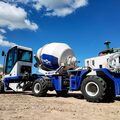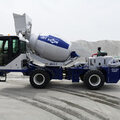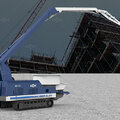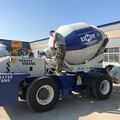Self-loading concrete mixers have revolutionized the construction industry. They combine several functions into one machine, offering efficiency and versatility. Understanding how to control these mixers is crucial for maximizing their potential and ensuring high-quality concrete production.
Familiarize Yourself with the Control Panel
The control panel is the heart of the self-loading concrete mixer for sale. It allows operators to manage various functions such as loading, mixing, and discharging. Familiarizing yourself with the control panel is the first step in effectively controlling the mixer.
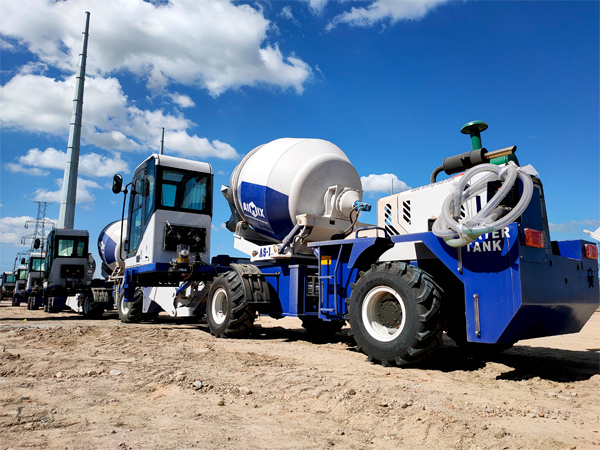
Basic Controls
The control panel includes basic controls for starting and stopping the engine. It also features buttons for operating the loading bucket and the mixing drum. Understanding these basic controls is essential for operating the mixer safely and efficiently.
Advanced Settings
The control panel also offers advanced settings for adjusting the water-to-cement ratio and mixing speed. These settings help you achieve the desired concrete consistency and quality. Take the time to understand how these advanced settings work to make the most of your mixer.
Loading the Raw Materials
The general working principle of self loading concrete mixer include loading, mixing, and discharging concrete. Loading raw materials correctly is crucial for achieving a consistent concrete mix. The self-loading bucket simplifies this process, but operators must still follow specific steps to ensure accuracy.
Material Measurement
Accurate measurement of raw materials like cement, sand, and aggregate is vital. Use the mixer’s built-in scales to measure the materials precisely. This ensures the correct proportions and improves the quality of the final mix.
Loading Sequence
Load the materials in a specific sequence to ensure thorough mixing. Typically, you start with the aggregate, followed by sand, and finally, cement. Add water last to avoid premature hydration of the cement.
Mixing the Concrete
Mixing is a critical stage in concrete production. The self-loading concrete mixer’s rotating drum ensures thorough mixing, but operators must control the process to achieve the best results.
Mixing Time
Adjust the mixing time based on the type of concrete you need. Longer mixing times result in a more uniform mix, while shorter times may be sufficient for less demanding applications. Refer to the control panel’s settings to adjust the mixing time as needed.
Mixing Speed
The mixing drum’s speed also affects the quality of the concrete. Higher speeds ensure quicker mixing but may introduce air bubbles into the mix. Lower speeds provide a more thorough mix but take longer. Adjust the speed according to your project requirements.
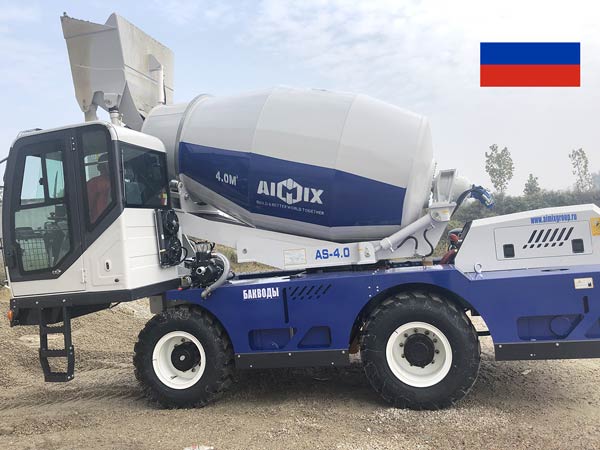
Discharging the Concrete
Discharging the concrete correctly ensures accurate placement and reduces waste. The self-loading concrete mixer’s design allows for precise discharge, but operators must control the process carefully.
Positioning the Mixer
Position the mixer close to the pouring site to minimize concrete travel distance. This reduces the risk of segregation and ensures a uniform mix. Use the mixer’s mobility features to navigate to the optimal position.
Discharge Speed
Control the discharge speed to match the project’s needs. Faster discharge speeds are suitable for large pours, while slower speeds offer better control for detailed work. Adjust the settings on the control panel to achieve the desired discharge speed.
Maintenance and Troubleshooting
Regular maintenance and troubleshooting are essential for the mixer’s longevity and performance. Follow the manufacturer’s guidelines to keep the mixer in optimal condition.
Routine Checks
Perform routine checks on the mixer’s components, including the engine, hydraulic systems, and mixing drum. Address any issues promptly to prevent downtime and ensure consistent performance.
Troubleshooting Common Issues
Familiarize yourself with common issues and their solutions. For example, inconsistent mixing may result from worn mixer blades, while difficulty in loading materials could indicate a problem with the self-loading bucket. Knowing how to troubleshoot these issues will keep your mixer running smoothly.
Conclusion
Controlling a self-loading concrete mixer involves understanding its control panel, loading materials correctly, managing the mixing process, and ensuring precise discharge. Regular maintenance and troubleshooting are also crucial for optimal performance. By mastering these aspects, you can maximize the efficiency and versatility of your self-loading concrete mixer. This knowledge will help you produce high-quality concrete and complete your construction projects more efficiently.

